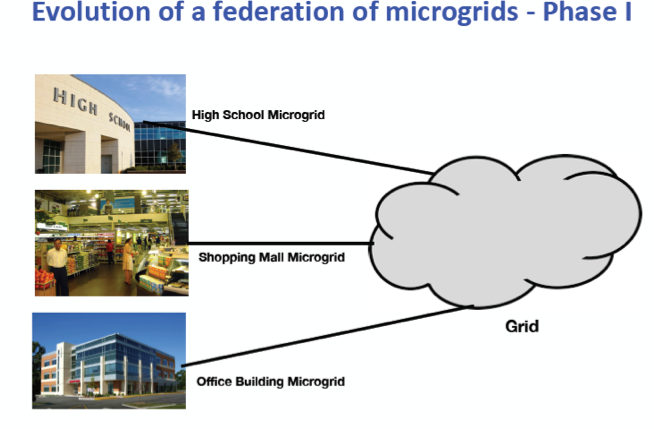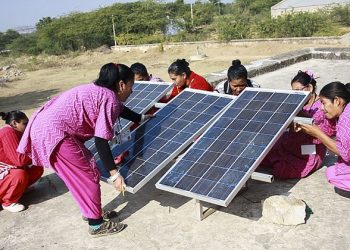Among my circle of friends and colleagues, everyone is aware of the impact of human activities on climate change – the melting of arctic ice, the destruction of species – and the major causes of it, namely, coal burning for electricity and fossil fuels burning for transport. What nearly everyone is unclear about is what specifically to do about it and how fast.
Thanks to the work of climate scientists, we know about planetary overheating, the resulting climate change, and its dimensions. However, we cannot unequivocally act on metrics such as 450 ppm of carbon dioxide in the air to be reduced to a lower number. What is practical and feasible to ameliorate the consequences of such concentrations? What does one do as an individual? As a corporation? As public policy?
Business role in climate action
We take guidance from Amy Larkin’s insight, “Nothing except nature can transform the world as swiftly as can business,” Yes, all businesses, and in particular entrepreneurial new businesses, may act. And for the first time in its 100+ years history, the electricity business is ripe for a boom in entrepreneurial initiatives.
Why? Because the barriers to entry in the electricity business have fallen. We do not need large capital – in tens of millions of dollars – to make electricity. We are all in the electricity business; that is what solar panels mean. The end of barriers to entry also means regulations can be minimal. The market and customer, instead of the regulator, can be decision makers.
We do need regulators to ensure that the public good aspect of electricity is equitably maintained – access, affordability, reliability, and resilience. Such minimal regulations can exist alongside market forces for the emerging electricity markets. Both in telecom and in electricity, public policy has achieved such rural-urban parity.
Further, the unit price of the new electricity does not depend on large scale. Economies of scale embodied in today’s coal powered thermal plants of gigawatt size, or large transmission networks, are not necessary for relatively inexpensive electricity. Both electricity generation and electricity use can be local with local delivery networks; we call such solutions distributed generation (DG).
Limits of public policy, role for business
What about public policy? Having recognized the global, existential scope of the problem for one so young, we acknowledge Greta Thunberg’s impassioned and well-argued plea to policy makers, the world over through the UN, and in particular her targeting of India’s Prime Minister Modi. Her appeal aimed at politicians, however, as that of environmental activists generally, is partly misdirected.

For an elected leader, there is a political cost to being too far ahead of the market. Prime Minister Modi clearly knows the negative consequences of business as usual power generation through coal burning. Yet there is only so much an elected politician can do; politicians as policy makers are typically reactive, seldom positive, and even claimed bold initiatives are seldom that.
The kernel of the idea of the Green New Deal by Congresswoman Alexandria Ocasio-Cortez and Senator Ed Markey, and a comprehensive proposal, Evergreen Economy Plan by Governor Jay Inslee, Washington state, who is a candidate for US president – $9 trillion investment over 10 years and aiming to create 8 million jobs while decarbonizing the economy – is no different than what Greta Thunberguzatxruauxszrccdczbrutubvv proposes: a Global Green New Deal for the welfare of future generations.
Yet even these well intentioned, public spirited initiatives ran into predicable, partisan, and juvenile political headwinds; Representative Ocasio-Cortez faces ridicule by her peers. Thus, the valid, critically important cause of a Global Green New Deal loses momentum. In sum, a preponderant emphasis on policy initiatives leads to dissatisfactory results.
Besides politicians, we ought to focus on business action too. Businesses face a lesser challenge in recognizing a problem and addressing it. This is particularly true for entrepreneurs.
Cluster of microgrids – a solution for a global green new deal
DG – solar panels everywhere one can with associated controls and storage – is a step in the right direction, but the economics of it, especially when the installation is not tied to the grid, is as yet difficult when batteries are involved. Batteries are still expensive, though falling in price. For a home, generating all its electricity, 100%, is still not as simple as buying a refrigerator. Besides, the home is too small a unit of analysis to make economic sense, with urgency and speed, for a society as a whole. Maybe we will reach that  point someday soon.
point someday soon.
Better to have microgrids of size 1 to 5 MW or larger, to serve schools and colleges, shopping malls, neighborhood of several hundred homes, hospitals, office buildings, factories, and the like.
Further, when these venues are in the same neighborhood, the microgrids may interact with each other, and share information and resources, that is, engage in inter-microgrid trade. The evening peak load of one microgrid, say a residential community, may offset the day time peak load of another, say, an office building.
Over time, this eliminates or drastically reduces the role of the grid, since a cluster of microgrids becomes a viable, inexpensive source of reliable power. In fact, in mu book The Microgrid Revolution, I state that a federation of microgrids is the topology of the grid of the future. As a solution, such “federations” will be inherently, substantially greener than the electricity production mechanisms of today, and contribute to emissions reductions.
Hopeful recent signs favoring federation of microgrids
Until recently, at the Microgrid Symposium, Bucharest, September 2018, the academic community – electrical engineers, operations research professionals – had not addressed the issues of optimizing microgrid clusters. At Microgrid Knowledge sponsored Microgrids conference, May 2019, in San Diego, we had several companies – ABB, Schneider, Siemens – working on microgrid federations. This is a cause for cheer since such solutions are in the global public interest.
While microgrids are important for electricity access, reliability, and resilience, they are exponentially more important when deployed as clusters, in venues after venues, in urban and rural markets, in emerging economies and developed ones, for industrial facilities (the so-called C&I commercial and industrial segments) and in residential communities.
Since barriers to entry in the electricity business have fallen, the emerging microgrid-driven electricity businesses are ideal for entrepreneurial solutions. And of course, to the business development efforts of existing businesses, and microgrid deployments by the incumbent utilities. The monopoly of today, however, would be gone; its time is past anyhow because it was created at a time when the concept of “natural monopoly” held sway for the electricity business. But no longer; indeed, the US might have over a 100,000 microgrid-driven utilities, competing and collaborating among each other.
The net result will be affordable, reliable electricity for all on a healthier planet with drastically reduced emissions. Federations of microgrids are precisely what a life-friendly planet needs as a Global Green New Deal.
We’ve added a new track dedicated to microgrids and mini-grids at DISTRIBUTECH International and we are accepting abstracts for speaking slots at the event until May 31. Check out the track info here and submit your abstract today!





